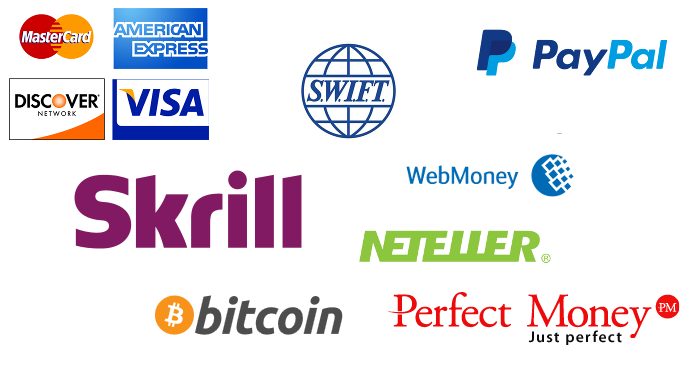
Five years ago, I have asked my readers about their preferred way of funding a Forex trading account. The results, unsurprisingly, showed a significant bias in favor of credit cards and PayPal. During the five years that passed, many things have changed in the payment systems and their availability to the Forex traders.

Credit/debit cards — a staple online payment method with all its insecurities (credit card data can be stolen) and inconveniences (filling the credit card payment form can be a tedious process). With NFA’s ban on credit cards as a form of FX account funding since January 31, 2015, the popularity of this method should have probably fallen.
Wire transfer — a slow payment method that can also be quite costly with smaller amounts of money.
PayPal — launched in 1998, is the oldest existing payment systems available online. It is mostly used to pay for goods and services. Unfortunately, not so many Forex brokers accept PayPal. And those who do, cannot accept funds from the credit cards via PayPal if they are based in the United States (see above).
Skrill — is younger than PayPal (founded in 2001). Started as Moneybookers, it rebranded to Skrill in 2011. The payment system’s main purpose was providing ways of funding for online betting and gambling websites. Forex brokers soon realized that Skrill is used by a huge part of their potential customers. Now, more than a half of all Forex brokers accept Skrill.
WebMoney — an international payment network of Russian origin with a unique wallet system, developed infrastructure and a complex security scheme. It can be very confusing to the new users, but those who get used to its quirks, stay with WebMoney for long. Perhaps, that is one of the reasons that its popularity with FX brokers is second only to Skrill among online payment systems.
Neteller — another payment system created for betting and gambling funding online. It was launched not long after PayPal (in 1999) and is now a popular funding method among Forex brokers. Since 2015, Neteller and Skrill are operated by the same company. It means that most probably they will not compete for the acceptance among Forex brokers, specializing each in its own niche. Neteller is significantly less popular among Forex brokers than Skrill as of today.
Bitcoin — along with other cryptocurrencies, is an outstanding way of depositing or withdrawing funds. On the one hand, it offers free, fast, and potentially anonymous method to fund your trading account. On the other one, it is very difficult for a Forex broker to get compliant with various KYC
Perfect Money — a payment system based in Panama, founded in 2007. When Liberty Reserve had ceased operating back in May 2013, Perfect Money’s popularity increased significantly as it took Liberty Reserve’s niche as the payment method of the
Check — an outdated payment method that is still accepted by some US and Canadian Forex brokers. I would really like to hear your thoughts if you have used check payment either for deposit or withdrawal recently.
![]() Loading …
Loading …
If you have some interesting comments or questions regarding the payment methods used for depositing and withdrawing funds in Forex trading, please feel free to reply using the form below.